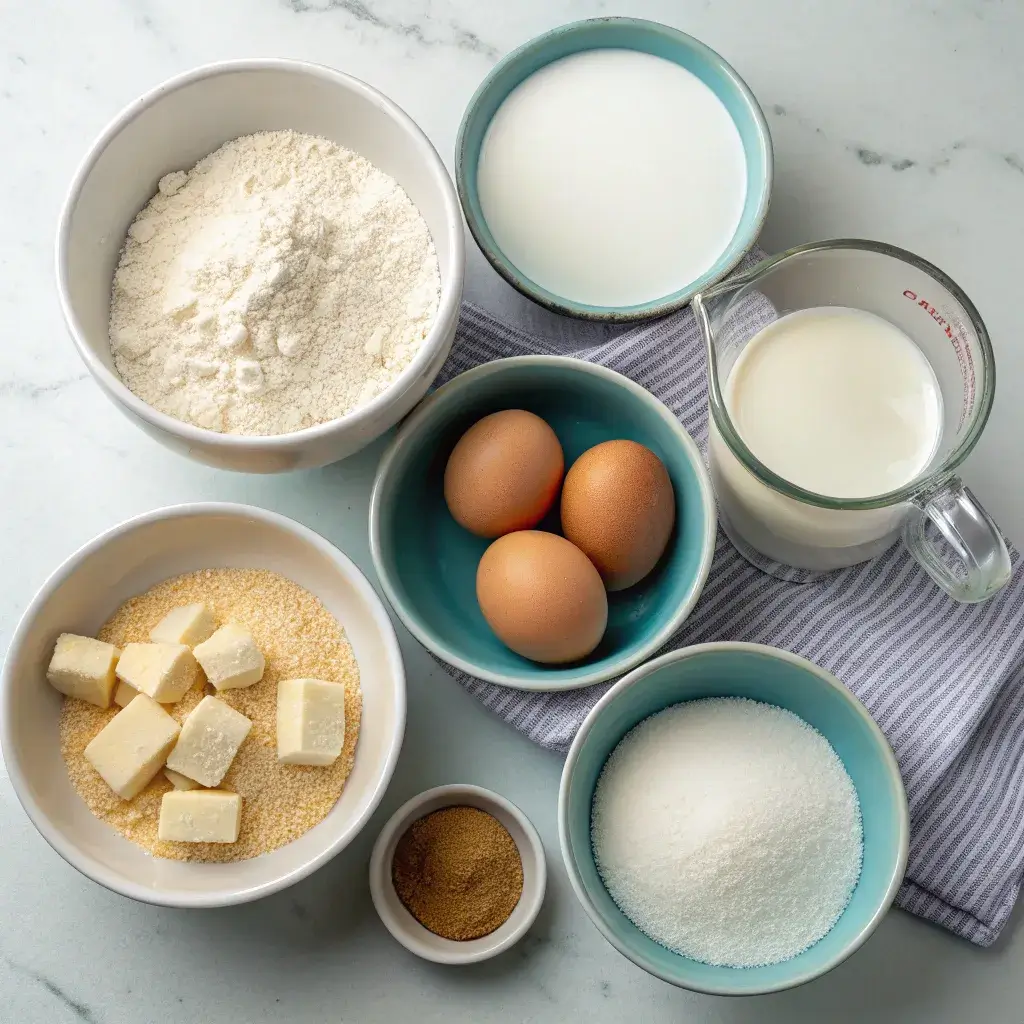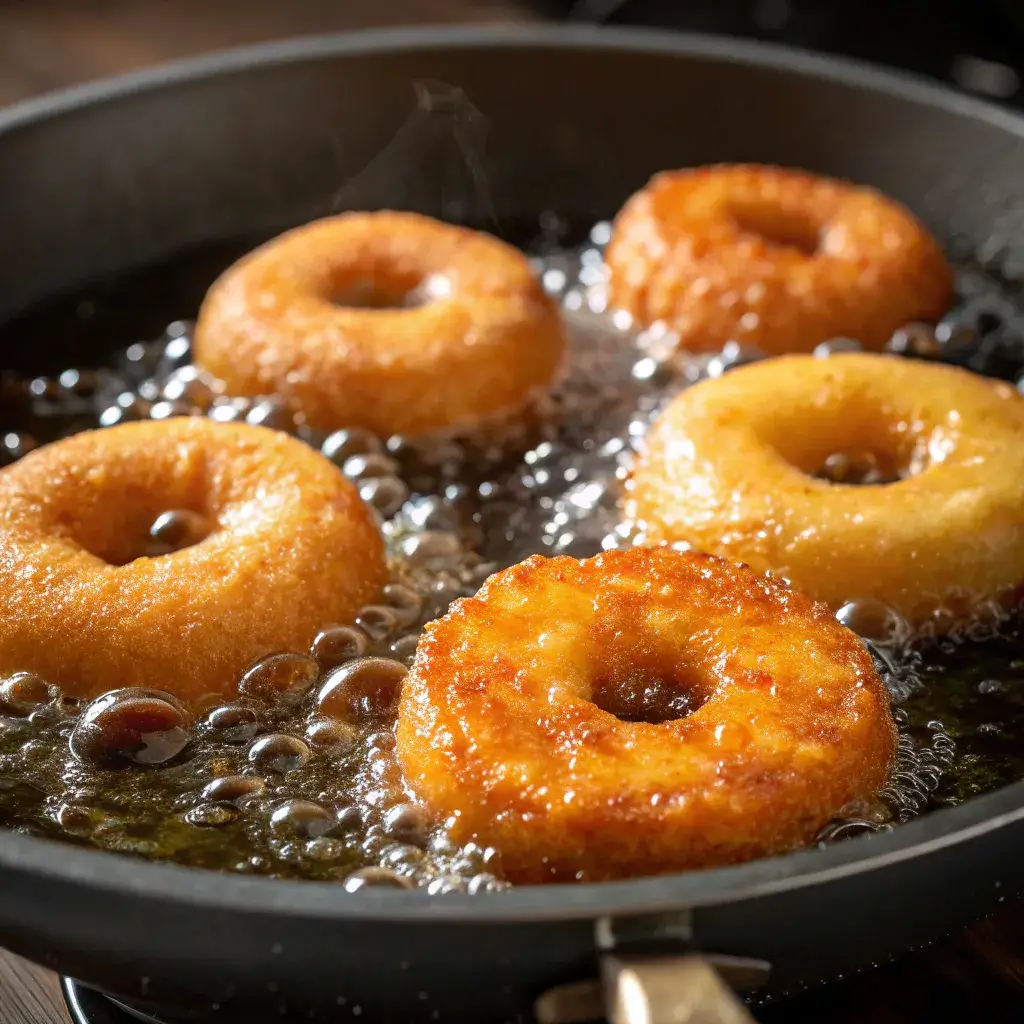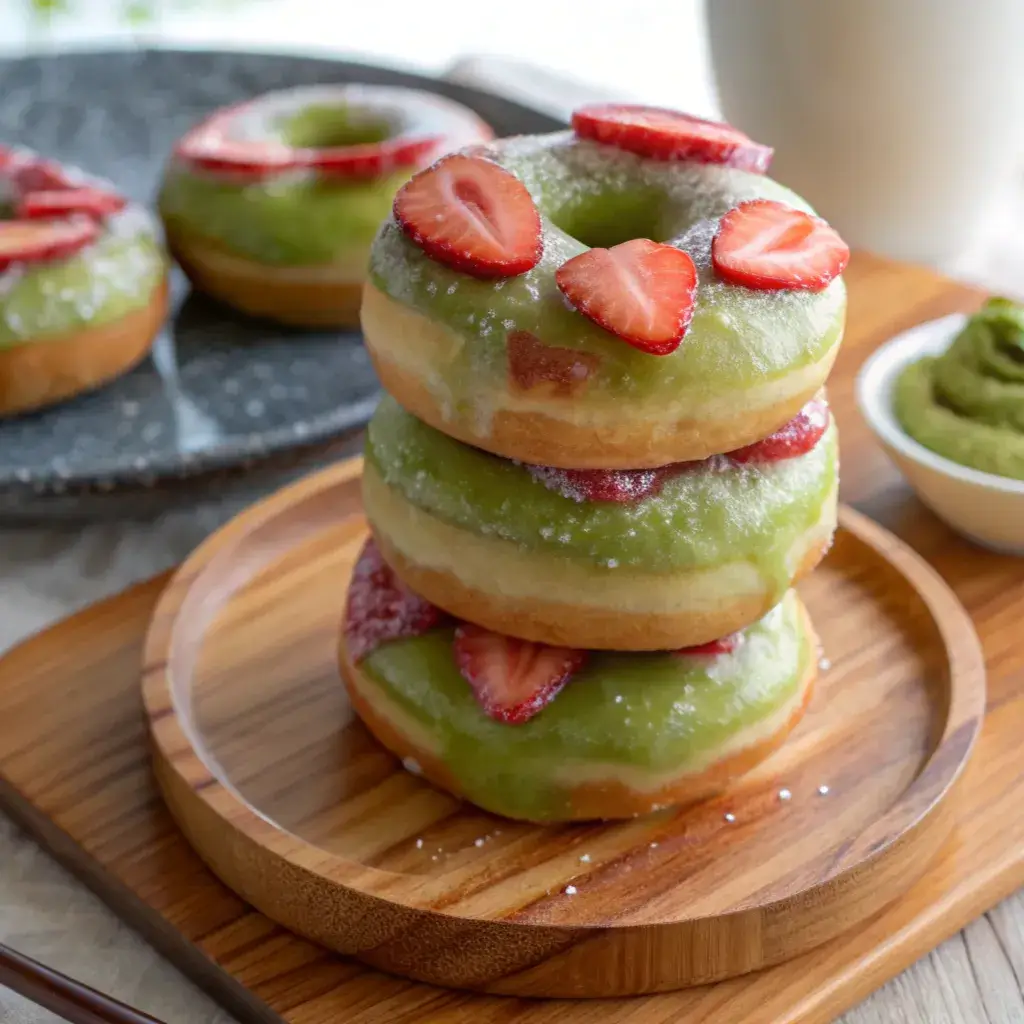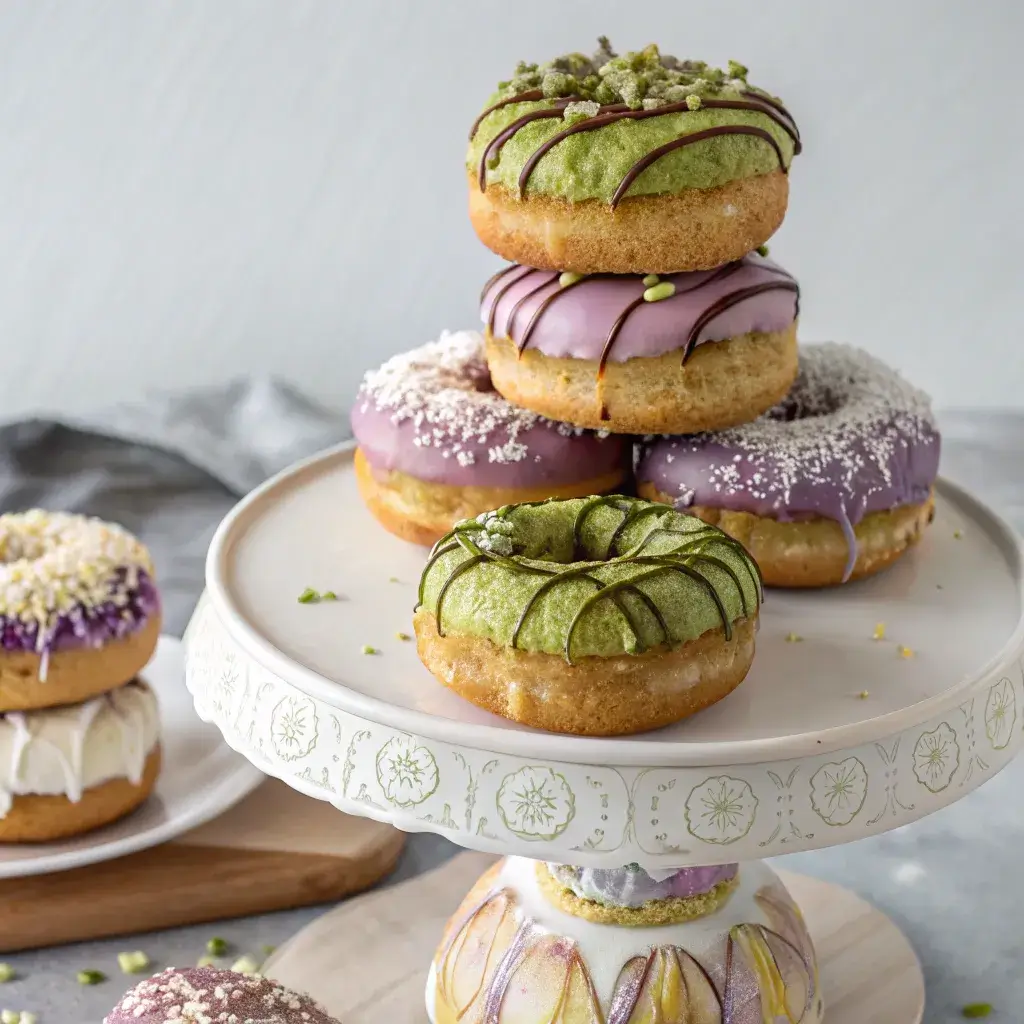Are mochi donuts gluten free? It depends on how they’re made. While traditional mochi donuts use sweet rice flour—which is naturally gluten-free—many recipes include wheat flour or other additives that can contain gluten. That’s right—not all mochi donuts are gluten-free.
While they may look gluten-friendly due to their chewy rice flour base, many recipes still include wheat flour, making them unsafe for those with gluten sensitivity. Always check the ingredients or opt for certified gluten-free versions.
At Recipes of Kitchen – The Gluten-Free Sweet Kitchen, I’m here to help you spot the difference and even make your own gluten-free version at home. Whether you’re curious about ingredients or looking for a reliable recipe, this guide breaks it all down.
What Are Mochi Donuts?
The Origin Story: From Japan to Hawaii to the U.S.
Mochi donuts are a modern dessert inspired by traditional Japanese mochi—a chewy rice cake made from glutinous rice. The donut version became popular in Hawaii and spread across the U.S. thanks to its fun shape and unique texture.
Unlike traditional donuts, mochi donuts are made with sweet rice flour (mochiko), which gives them their signature chewy, stretchy texture. They’re often shaped like a ring of connected dough balls and can be either fried or baked for a unique twist.
Why Mochi Donuts Are Different From Regular Donuts
The main difference lies in the flour:
| Type | Flour Used | Texture | Gluten-Free |
|---|---|---|---|
| Regular Donuts | All-purpose wheat flour | Fluffy, cakey | ❌ |
| Mochi Donuts | Sweet rice flour (mochiko) | Chewy, springy | ✅ Sometimes |
Since mochi flour (sweet rice flour) is naturally gluten-free, mochi donuts can be gluten-free—but only if no wheat-based ingredients are included in the recipe. Always double-check labels or recipes to be sure.
Print
Mochi Donuts Gluten Free
- Total Time: 40 minutes
- Yield: 6 mochi donuts 1x
Description
Chewy, slightly crispy, and naturally gluten-free mochi donuts made with sweet rice flour—perfect for customizing with colorful glazes and toppings.
Ingredients
1 cup mochiko (sweet rice flour)
1/4 cup almond flour
1/4 cup sugar
1 tsp baking powder
1/4 tsp salt
1/2 cup milk (dairy or non-dairy)
1 large egg
1 tbsp melted butter or coconut oil
1/2 tsp vanilla extract
Oil for frying
For glaze (optional):
1 cup powdered sugar
2–3 tbsp milk or coconut milk
1/4 tsp flavor extract (vanilla, matcha, strawberry, etc.)
Food coloring (optional)
Instructions
1. In a large bowl, whisk together mochiko, almond flour, sugar, baking powder, and salt.
2. In another bowl, mix milk, egg, melted butter or oil, and vanilla.
3. Pour wet ingredients into dry ingredients and mix until a sticky dough forms.
4. Divide and roll dough into small balls (about 1 inch), then connect 7–8 balls into a ring shape on a parchment square.
5. Heat oil in a deep pan to 325°F (165°C).
6. Carefully drop each donut into the oil using the parchment, which will release after a few seconds.
7. Fry donuts for 2–3 minutes per side, until puffed and golden.
8. Drain on paper towels and cool slightly.
9. Whisk glaze ingredients until smooth, then dip cooled donuts and let set.
10. Decorate with sprinkles, sesame seeds, or crushed freeze-dried fruit if desired.
Notes
Use mochiko for the signature chewy texture—do not substitute with regular flour.
Keep oil at a steady temperature for even frying.
Donuts are best enjoyed fresh but can be reheated gently.
For baked mochi donuts, use a donut pan and bake at 350°F (175°C) for 20–25 minutes.
- Prep Time: 20 minutes
- Cook Time: 20 minutes
- Category: Dessert
- Method: Frying
- Cuisine: Japanese
Nutrition
- Serving Size: 1 donut
- Calories: 220
- Sugar: 12g
- Sodium: 90mg
- Fat: 9g
- Saturated Fat: 4g
- Unsaturated Fat: 4g
- Trans Fat: 0g
- Carbohydrates: 31g
- Fiber: 1g
- Protein: 3g
- Cholesterol: 35mg
Keywords: mochi donuts, gluten-free donut, chewy donut, rice flour dessert
The Main Ingredients in Mochi Donuts
What Are Mochi Donuts Made From?
If you’re wondering, are mochi donuts gluten free, the answer comes down to their core ingredients. Traditional mochi donuts are made with sweet rice flour (also called mochiko), which gives them their unique chewy texture. This type of flour is naturally gluten-free and made from sticky rice, not wheat.
Typical base ingredients include:
- Sweet rice flour (mochiko)
- Sugar
- Baking powder
- Milk or non-dairy milk
- Eggs (optional)
- Butter or neutral oil

Some recipes—especially those in commercial bakeries—also include wheat flour or pre-made donut mixes. That’s where the question “Are mochi donuts gluten-free?” gets tricky. The dough might look the same, but one recipe could be completely gluten-free, while another contains hidden wheat flour. Always read the ingredients carefully or ask before indulging.
How Sweet Rice Flour Creates That Chewiness
Sweet rice flour behaves very differently from all-purpose flour. When cooked, it becomes sticky, stretchy, and dense—creating that addictive mochi chew. This is why so many people ask, “Are mochi donuts gluten free if they’re this chewy?” The answer is yes, if the chew comes from sweet rice flour, not gluten-based wheat flour.
Always check the label or recipe, because are mochi donuts gluten free is a yes only when no wheat or barley is involved.
Are Mochi Donuts Naturally Gluten Free?
Understanding Sweet Rice Flour vs. Regular Flour
At first glance, mochi donuts might seem like the perfect gluten-free dessert. After all, they’re made with sweet rice flour, which is naturally gluten-free. But here’s where it gets a bit complicated: not all mochi donuts are naturally gluten-free.
Sweet rice flour—also called mochiko—is made from glutinous rice, which, despite the name, contains no gluten. The term “glutinous” refers to its sticky, stretchy texture, not the gluten proteins found in wheat. So technically, mochiko is safe for gluten-free diets—but only if the rest of the recipe avoids wheat-based ingredients.
However, many bakery-style mochi donuts blend sweet rice flour with wheat flour to improve structure or reduce costs. Unfortunately, this combination eliminates their gluten-free potential. So even if a mochi donut looks perfectly chewy and authentic, it might not be safe for those with celiac disease or gluten sensitivity. Always check before you bite.
Hidden Gluten Risks in Store-Bought Versions
The biggest risk for anyone wondering “Are mochi donuts gluten-free?” comes from pre-made or store-bought varieties. Here’s why:
- Cross-contamination in shared kitchens
- Use of donut mixes that contain wheat starch
- Additives or thickeners made from barley or rye
- Inconsistent labeling or lack of gluten-free certification
To stay safe, always check ingredient labels or ask the bakery staff if you’re unsure. Even better—make your own at home (we’ll show you how in Part 5).
Looking for foolproof gluten-free alternatives? Try the easy Gluten-Free Cloud Bread Dessert for a light and airy snack with zero flour risk.
Gluten-Free Mochi Donuts – What to Look For
Labels, Certifications, and Cross-Contamination Risks
When it comes to figuring out are mochi donuts gluten free, reading the label isn’t enough—you need to know how and where they’re made. Even if the dough uses sweet rice flour, cross-contamination can occur during prep or frying.
To confidently say “yes” to are mochi donuts gluten free, here’s what to check:
| ✅ Safe Signs | ❌ Red Flags |
|---|---|
| “Certified Gluten-Free” label | Wheat flour or mixed grain flours |
| Uses only mochiko or rice flour | Shared fryers with wheat items |
| Prepared in GF kitchens | No allergen disclaimers |
Many people ask, are mochi donuts gluten free at bakeries? Often, they’re not. That’s because traditional bakeries may use wheat-based flour blends for texture or cost. Always ask whether the mochi donuts are made in a dedicated gluten-free facility.
Top Gluten-Free Mochi Donut Brands and Mixes
Still asking, are mochi donuts gluten free when store-bought? These trusted brands deliver both flavor and gluten-free peace of mind:
- Mochi Foods USA – GF Donut Mix
- Otto’s Naturals – Cassava Flour Recipes
- Third Culture Bakery – Certified GF Options
Discover another GF favorite like Strawberry Blondies while exploring safe, chewy bakes.
How to Make Gluten-Free Mochi Donuts at Home
Basic Recipe Using Mochiko or Tapioca Flour
For those asking, are mochi donuts gluten free, making them at home is the safest and tastiest option. When you control the ingredients, there’s no second-guessing. This easy homemade recipe uses mochiko flour, the core of traditional mochi texture.
Ingredients:
- 1 cup mochiko (sweet rice flour)
- 1/4 cup tapioca starch
- 1/3 cup sugar
- 1 tsp baking powder
- 1/2 cup milk (or non-dairy alternative)
- 1 egg (or flax egg)
- Oil for frying
Instructions:
- Mix all dry ingredients in a bowl.
- Add milk and egg, stir until a sticky dough forms.
- Shape into small balls or the classic mochi ring.
- Fry in hot oil (350°F) until golden brown.
- Drain on paper towels and glaze as desired.

If you’re wondering, are mochi donuts gluten free, the answer here is yes—because we’re using no wheat. To ensure safety, always check that your mochiko and other ingredients are labeled gluten-free.
By making your own, you never have to question again, “Are mochi donuts gluten free?” You’ll know they are.
Vegan and Dairy-Free Mochi Donut Options
Common Substitutes for Eggs and Milk
People often ask, “Are mochi donuts gluten free and vegan?” es, they can be—but keep in mind that many classic recipes include milk and eggs. But with the right swaps, you can enjoy a vegan AND gluten-free version that’s just as chewy and delicious.
To answer “are mochi donuts gluten free” in a vegan kitchen:
| Ingredient | Vegan Substitute |
|---|---|
| Milk | Coconut milk, oat milk |
| Egg | Flax egg or mashed banana |
| Butter | Coconut oil or vegan margarine |
Use gluten-free flours like mochiko or tapioca, and mix in your wet ingredients slowly to maintain consistency. Bake or fry the dough the same way—just avoid overmixing.
Balancing Texture Without Compromising Flavor
When asking, are mochi donuts gluten free, texture is the next question. Gluten-free batters can get sticky or too soft, but with the right starch blend, your vegan mochi donuts will hold their shape and taste just as rich.
So yes, are mochi donuts gluten free AND vegan? They definitely can be—without giving up flavor or texture.
Nutritional Profile of Mochi Donuts
Calories, Sugar, and Gluten-Free Considerations
If you’re carefully counting calories or monitoring gluten, you may still be wondering: are mochi donuts gluten free, and are they a better dessert option?

Here’s a basic breakdown (per 1 medium donut):
| Nutrient | Amount |
|---|---|
| Calories | ~130–150 |
| Sugar | 8g–10g |
| Fat | 5g–7g |
| Carbs | 20g–25g |
Now, are mochi donuts gluten free options healthier than regular donuts? Sometimes yes. Because they’re made with rice flour instead of wheat, they may be easier to digest and less processed. Plus, many recipes are naturally lower in refined sugar and fat.
Healthier Alternatives and Air-Fryer Options
If you’re still asking “are mochi donuts gluten free and lighter?”, try baking or air frying them. You’ll use less oil and still get the crisp outside.
And with control over ingredients like sweeteners and dairy, you can customize your mochi donuts to fit your health goals without compromising your dietary needs.
Serving, Topping & Flavor Ideas
From Matcha to Strawberry Glaze
Now that you’ve answered the question “are mochi donuts gluten free” for your kitchen, it’s time to get creative. Mochi donuts are the perfect canvas for a wide range of glazes and toppings—especially because their chewy texture holds flavor so well.
Here are some favorite gluten-free-friendly topping ideas:
| Topping | Flavor Profile |
|---|---|
| Matcha glaze | Earthy, slightly bitter |
| Strawberry icing | Sweet and fruity |
| Ube drizzle | Creamy, nutty, vibrant |
| Coconut shavings | Tropical crunch |
| Cinnamon sugar | Warm and classic |
The glazes can be made gluten-free using basic ingredients like powdered sugar, plant-based milk, and natural flavoring. Just make sure any colorings or extracts are certified GF.

Fun Gluten-Free Toppings: Coconut, Ube, and More
Once you’ve settled the issue—are mochi donuts gluten free in your recipe?—have fun with it! oll freshly fried donuts in cinnamon, finish with a rich coconut caramel glaze, or add a playful touch with a drizzle of ube icing.
When people ask, “Are mochi donuts gluten free AND delicious?” Your toppings will answer that for you—absolutely yes.
Mochi Donuts on Social Media & Pop Culture
Why Mochi Donuts Went Viral
It’s no surprise that people are searching, “are mochi donuts gluten free”, especially as these chewy treats take over Instagram and TikTok. Their signature “pon de ring” shape, colorful glazes, and stretchy texture make mochi donuts one of the most photogenic and talked-about desserts online.
What makes them even more appealing? Many versions are made with naturally gluten-free ingredients, which fits perfectly into modern dietary trends. As more people ask, “are mochi donuts gluten free”, influencers and food bloggers are quick to highlight their gluten-free potential—when made the right way.
Best Hashtags and How to Share Your Homemade Creations
Making mochi donuts at home? Don’t forget to show them off! Snap your creations in natural light, capture that iconic mochi stretch, and tag your post with trending hashtags like.
- #MochiDonuts
- #GlutenFreeDesserts
- #ChewyDonuts
- #RiceFlourBakes
- #AreMochiDonutsGlutenFree
When your friends ask, “are mochi donuts gluten free”, you’ll be able to answer confidently—and even share your custom recipe with them.
Want to try another viral dessert? Don’t miss our Keke Saiga Samoan Treat for another cultural twist that’s just as photo-worthy.
Frequently Asked Questions (FAQs)
Are mochi donuts gluten free?
They can be, but not always. If made with sweet rice flour (mochiko) and without any wheat-based ingredients, mochi donuts are gluten free. Always check the label or recipe.
Is mochi contain gluten?
Traditional mochi made from glutinous rice flour does not contain gluten.
Does mochi have gluten free?
Yes, most mochi is naturally gluten free, especially when made from pure mochiko flour. Always verify there are no added wheat flours or sauces with gluten.
What are mochi doughnuts made from?
Mochi donuts are made from sweet rice flour (mochiko), sugar, baking powder, milk, and eggs.
Yes—Mochi Donuts Can Be Gluten-Free and Delicious
So, are mochi donuts gluten free? They absolutely can be—as long as you check ingredients and avoid cross-contamination. Whether you’re making them at home or buying from a trusted gluten-free bakery, these chewy, stretchy treats are one of the best ways to enjoy dessert without gluten.
Looking for more gluten-free delights?
Check out our fan-favorite Dalgona Gluten-Free Mug Cake for a quick, satisfying dessert.

